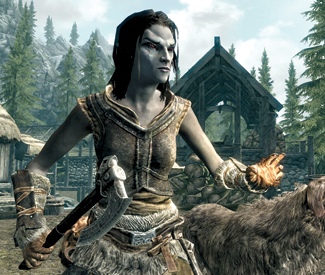GAMER There are only so many times we can celebrate the world’s top-selling entertainment industry before it starts to feel self-congratulatory. The Game Developer’s Conference, held at San Francisco’s Moscone Center, marks the beginning of a year packed with conferences and expos that run well into September, each aimed at announcing new games and boasting new technologies. In kicking off the year’s lineup, the GDC hopes to lead by example, putting the industry’s stars and its someday-somebodies first.
Many attendees are young students who approach the developer-run panels like they would courses at a university. They take notes, they ask questions, they check their Facebook incessantly, and look generally eager to learn. The vibes are good, as amateurs meet their idols in hopes of soaking up life experience from big names.
This year, Heavy Rain director David Cage reiterated his vision of a gamescape populated by digital actors with a tech demo preview called “Kara” for a motion capture technology his company is working on. Minecraft creator Markus “Notch” Persson arrived to near-universal adoration; his runaway indie success has made the developer famous, but it is his willingness to share his ideas (and wealth) with other devs that resonates with fans, and encouraged an enormous number of fedora hats in his honor.
In rare Nintendo news, Super Mario 3D Land director Koichi Hayashida gave a presentation in his native Japanese that seemed to shed light on the company’s approach to most of their first-party-developed titles: come up with novel ideas first and build games around them. Hayashida’s presentation could have been called “ENJOY EVERYTHING HAVE FUN” but it also touched a personal note when the director revealed how the 3DS game was a comfort to him and other Japanese players following last year’s earthquake.
In a complete 180 to Nintendo’s uplifting session, Hayashida was followed by a speech by Keiji Inafune addressing the future of Japanese games. A few years back, Inafune drew fire for stating that the struggling Japanese game industry was “done.” Inafune didn’t retract his controversial statement but admitted he meant it to “light a fire” under Japanese developers who continue to rely on aging franchises, and he rallied for more experimentation from his countrymen.
GDC’s own awards show, the Choice Awards, offer a much-appreciated antithesis to the flashy Spike TV awards, which has the unfortunate advantage of airing in December rather than March. Nominations come directly from fellow industry types, and function as a sort of peer-review for the winning game studios. Cementing its universal acclaim, The Elder Scrolls V: Skyrim took top Choice Awards honors, and upcoming XBLA game Fez won big during the co-presentation of the Independent Games Festival.
With Los Angeles’ Electronic Entertainment Expo (E3) coming up in June, the big consoles are encouraged to go light on big reveals and marketing campaigns during GDC. So, a week earlier Microsoft hosted an “unrelated” Spring Showcase just up the street to show off their spate of, largely, Xbox Live Arcade games. And Halo 4. XBLA games were there to prove Microsoft’s commitment to supporting the platform, as well as its Kinect motion technology, but for mainstream gamers it seemed Microsoft figured people would be satisfied with gameplay from Halo 4 — and they were probably right.
Otherwise, demos were scarcer than last year. Lollipop Chainsaw, a new zombie-action title from maverick Japanese developer Suda 51 (No More Heroes), attempted to drum up attention for their summer release date announcement by throwing a zombie-themed party in the claustrophobic 111 Minna Gallery, and EA’s joint shooter event showed off Battlefield 3 DLC and the newly-announced Medal of Honor sequel Warfighter. Nothing so newsworthy as the hundreds of little red balloons that THQ unleashed on the city in 2011 to promote Homeland. Glitz and glamour is fun to read about, and brings visibility to a conference that celebrates growth, but the most interesting and lasting moments of GDC 2012 won’t be reported in a newspaper or blog. Young developers were inspired, and, for the rest of us, the demos in hotel rooms and swanky nightclub parties are secondary to the certainty that it’s useful to learn how games are made, and healthy to think about the people making them.

